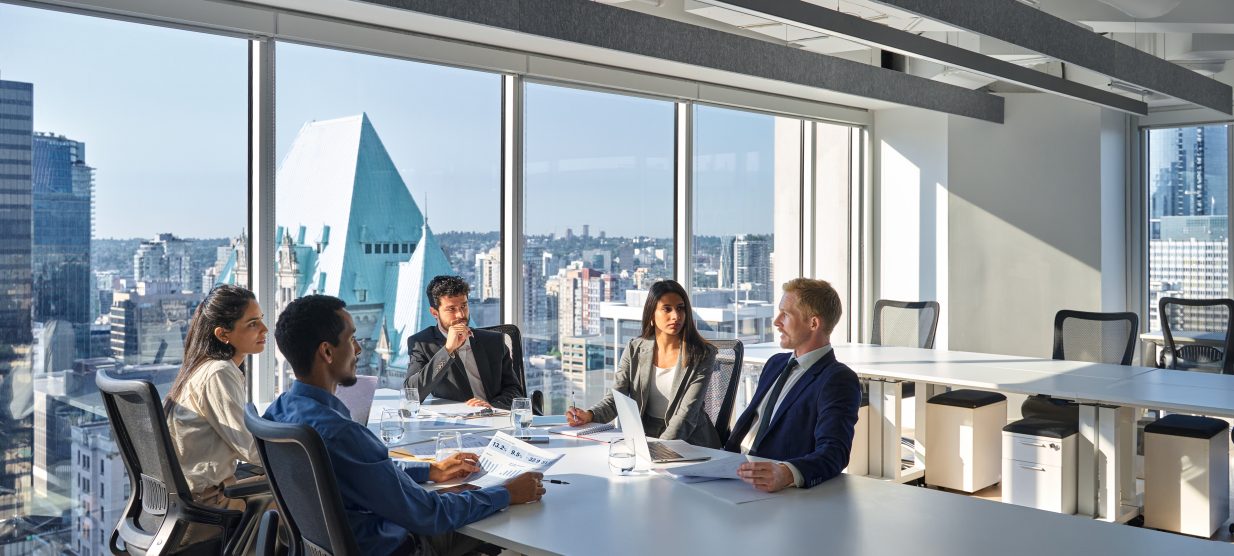Dynamic Office Spaces: The Future of Collaborative Work
Dynamic Office Spaces: The Future of Collaborative Work
The workplace has undergone a seismic shift in recent years, with companies increasingly adopting flexible and collaborative environments that cater to a dynamic workforce. The traditional static office layout is giving way to more innovative solutions, such as dynamic office spaces, where flexibility, collaboration, and productivity meet. This blog will explore what dynamic office spaces are, why they are the future of collaborative work, and how businesses can benefit from implementing them.
What Are Dynamic Office Spaces?
Dynamic office spaces are flexible, adaptive environments designed to accommodate various working styles and needs. They prioritize open layouts, modular furniture, and technology that enable easy reconfiguration of spaces to suit individual and team requirements. Unlike traditional offices, where desks and rooms are permanently assigned, dynamic office spaces promote fluid movement, allowing employees to choose where they work based on the task at hand—whether it’s solo work, collaboration, or brainstorming sessions.
These spaces are often found in serviced offices and coworking environments, where companies can enjoy the benefits of flexible leasing arrangements and access to state-of-the-art facilities.
The Rise of Dynamic Office Spaces: A Shift in Workplace Culture
The rise of dynamic office spaces is a direct response to changing workplace dynamics. With more businesses embracing hybrid work models, the need for flexible work environments has never been greater. According to a survey by Accenture, 83% of workers prefer a hybrid work model where they can split their time between home and the office. As a result, companies are reducing their reliance on permanent workstations and investing in dynamic office layouts that support both in-office and remote work.
Moreover, a JLL report on future workspaces highlights that 70% of companies plan to adopt flexible office solutions, including dynamic spaces, to optimize their real estate and foster collaboration. Dynamic office spaces allow businesses to create environments that encourage spontaneous interaction and creativity, critical elements for innovation-driven industries.
Benefits of Dynamic Office Spaces
1. Increased Collaboration and Innovation
Dynamic office spaces are designed with collaboration in mind. With open layouts, shared desks, and common areas, these spaces foster interaction between employees who might not otherwise work together. In a dynamic workspace, teams can easily move from private areas for focused work to collaborative zones for brainstorming sessions. This fluid movement enhances teamwork and helps spark new ideas.
2. Cost Efficiency
One of the biggest advantages of dynamic office spaces is their cost efficiency. Since these spaces are designed to be flexible, companies can reduce the amount of office real estate they need, cutting costs on rent, utilities, and maintenance. Research by Global Workplace Analytics suggests that businesses can save an average of $11,000 per employee annually by adopting flexible work arrangements, including dynamic office setups.
3. Employee Satisfaction and Productivity
Giving employees the freedom to choose where and how they work boosts job satisfaction and productivity. A study by Harvard Business Review found that workers in flexible, dynamic environments report higher levels of happiness and engagement. When employees have access to spaces that meet their specific needs—whether it’s a quiet room for focused tasks or an open area for collaboration—they are more likely to stay productive and satisfied with their work.
4. Adaptability to Changing Needs
In a world where business needs can change quickly, dynamic office spaces offer the adaptability that companies require. With modular furniture and reconfigurable spaces, businesses can easily adjust their office layout to accommodate growth, new projects, or changes in team structures. This flexibility is especially valuable for startups and growing companies, where the ability to scale quickly is essential.
5. Support for Hybrid Work Models
As more businesses adopt hybrid work models, dynamic office spaces provide the perfect environment to support both in-office and remote workers. These spaces can be configured to provide workstations for those in the office while also offering areas for virtual meetings and collaboration with remote colleagues. This balance ensures that employees can maintain productivity regardless of where they are working from.
Implementing Dynamic Office Spaces: Best Practices
If you’re considering transitioning to a dynamic office space, here are some best practices to ensure a successful implementation:
1. Invest in Flexible Furniture and Technology
To create a truly dynamic office, invest in modular furniture that can be easily rearranged to suit different working styles. This includes movable desks, foldable partitions, and multi-functional seating. Additionally, ensure your office is equipped with the latest technology, such as video conferencing tools and wireless connectivity, to support both in-office and remote collaboration.
2. Design for Collaboration and Focus
A well-designed dynamic office space should strike a balance between areas for collaboration and spaces for focused work. While open layouts are great for team interaction, they can also be noisy and distracting. Consider creating quiet zones or private rooms where employees can retreat when they need to concentrate on individual tasks.
3. Promote a Culture of Flexibility
Dynamic office spaces thrive in a culture that embraces flexibility. Encourage your employees to move around the office and use different spaces throughout the day. This not only enhances collaboration but also keeps the workspace fresh and engaging.
4. Monitor and Adapt
As with any major office change, it’s essential to gather feedback from employees and make adjustments as needed. Regularly monitor how the space is being used and whether employees feel it meets their needs. This will help you fine-tune your dynamic office layout to ensure it continues to support productivity and satisfaction.
The Future of Work: Why Dynamic Office Spaces Are Here to Stay
As the future of work continues to evolve, dynamic office spaces are becoming a key feature of modern workplaces. With companies increasingly adopting hybrid work models, the demand for flexible, collaborative environments will only grow. Businesses that embrace dynamic office spaces are better positioned to attract and retain top talent, foster innovation, and adapt to changing market conditions.
In fact, a recent Gensler Workplace Survey found that 67% of employees believe that having a choice of where to work within the office leads to higher productivity. This statistic underscores the importance of offering flexible office environments that cater to various working styles.
Moreover, as sustainability becomes a growing concern for businesses worldwide, dynamic office spaces offer a more eco-friendly alternative to traditional office setups. By optimizing space usage and reducing waste, companies can lower their carbon footprint while maintaining a productive and engaged workforce.
Is Your Business Ready for Dynamic Office Spaces?
Dynamic office spaces are more than just a trend—they represent the future of collaborative work. By adopting flexible layouts, companies can enhance collaboration, reduce costs, and improve employee satisfaction. Whether you’re a growing startup or an established company looking to optimize your office space, dynamic office solutions can provide the adaptability and innovation you need to stay competitive in today’s market.
Are you ready to transform your office into a dynamic, flexible workspace? Explore our serviced offices at DBH Serviced Office to see how we can help you create the perfect environment for your team to thrive.
Read more in the topic and get to know how Serviced Offices Can Enhance Talent Acquisition Strategies.

Do not hesitate to contact us
Get in touch, if you have any question

